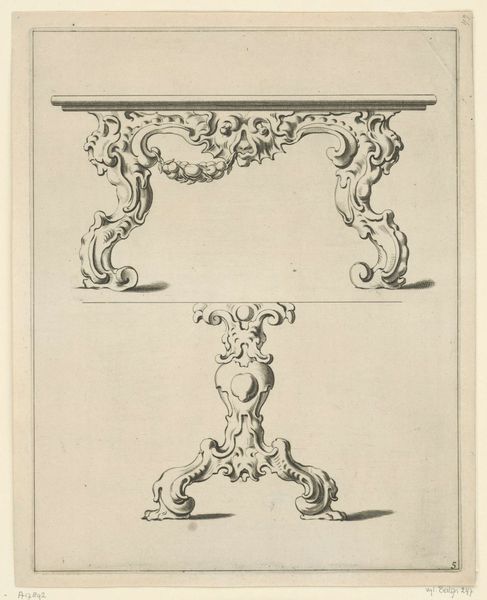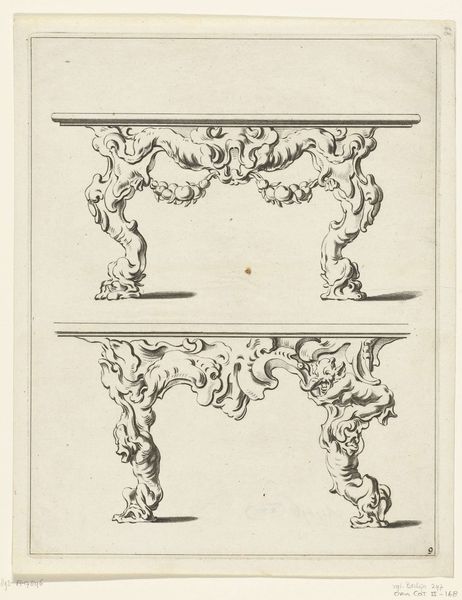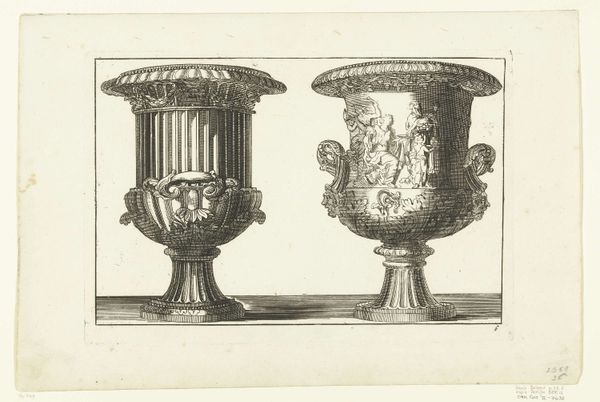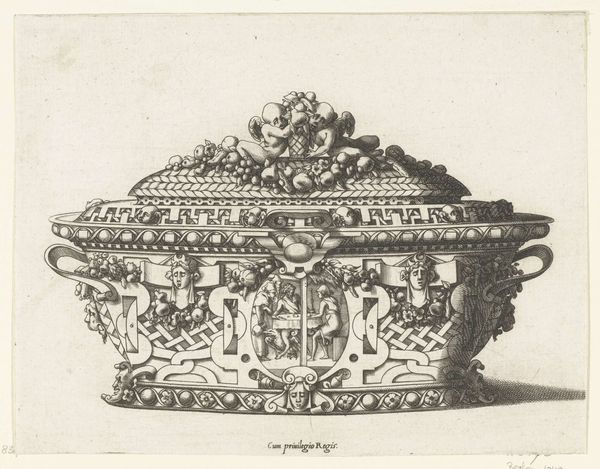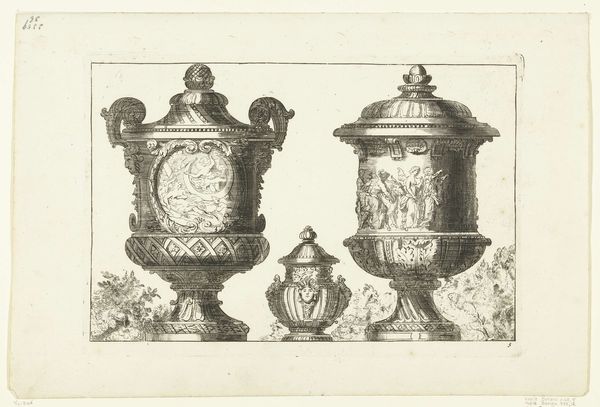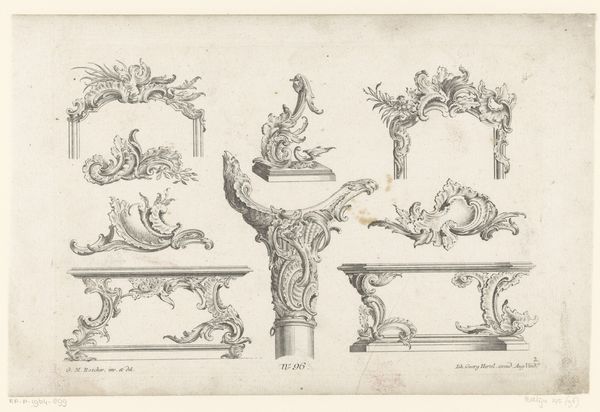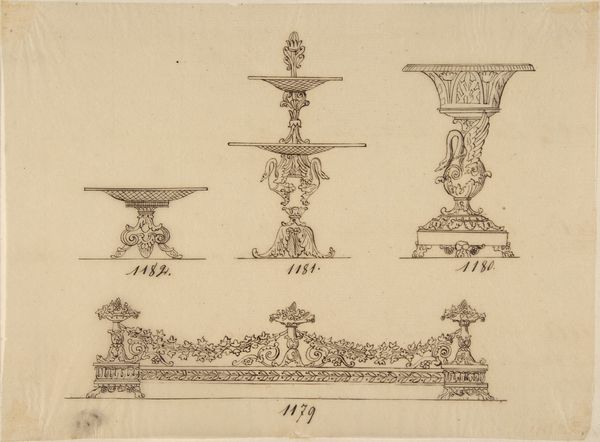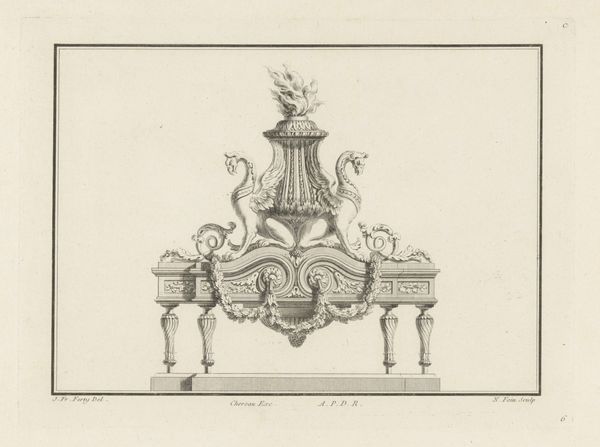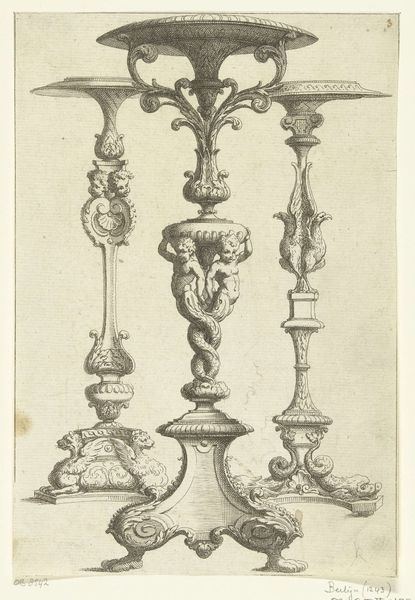
print, metal, engraving
#
light pencil work
#
quirky sketch
# print
#
metal
#
pencil sketch
#
old engraving style
#
mannerism
#
cartoon sketch
#
figuration
#
11_renaissance
#
personal sketchbook
#
ink drawing experimentation
#
pen-ink sketch
#
sketchbook drawing
#
decorative-art
#
sketchbook art
#
engraving
Dimensions: height 139 mm, width 179 mm
Copyright: Rijks Museum: Open Domain
René Boyvin created this engraving of two ornate covered drinking bowls in the 16th century. Boyvin lived in a time and place deeply shaped by rigid social hierarchies and expectations, particularly concerning gender. The bowls reflect this context through their elaborate decoration featuring idealized human figures. Consider how the artist employs the naked body, particularly the female form, in conjunction with themes of labor and leisure. On one bowl the figures carry the bowl, literally supporting the site of leisure and merriment that the drinking bowl enables. On the other, figures lounge atop the bowl, seemingly unburdened by labor. Does this positioning uphold or subvert the era’s gendered expectations? How does this imagery speak to the relationship between social status, labor, and pleasure in the 16th century?
Comments
No comments
Be the first to comment and join the conversation on the ultimate creative platform.

